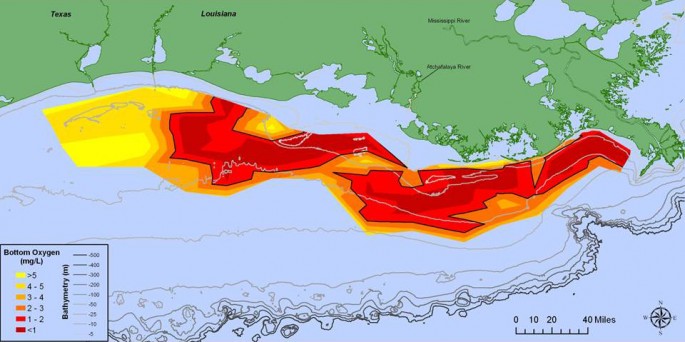Scientists believe that the "dead zone" found in the Gulf of Mexico which is a region of water devoid of any oxygen near the coasts of Louisiana and Texas considered dangerous to marine ecosystems, is now estimated to be larger than average this summer.
According to the National Oceanic and Atmospheric Administration, this year's dead zone now measures 6,474 square miles which is estimated to be the size of Connecticut and Rhode Island combined. The agency says that this has become bigger than average due to heavier June rains occurring in the Mississippi River watershed.
Dead zones occur in bodies of water when oxygen is depleted from water that can prevent marine life to thrive.This phenomenon is also called hypoxia where it's caused by nutrient runoff due to excessive use of fertilizer on agricultural fields mostly occurring during spring.
These nutrients from the fertilizer specifically nitrogen can trigger the growth and spread of algae and when these algae die, their decay can consume oxygen so fast before it can be brought down from the surface, resulting in fish, shrimp, crabs and other marine animals to suffocate.
According to Nancy Rabalais who is the executive director of the Louisiana Universities Marine Consortium, heavy rains this June along with excess nitrogen and higher river discharges are possible causes of the dead zone becoming larger in size.
NOAA also reveals that the largest ever measured dead zone in the Gulf of Mexico was when it was 8,497 square miles in 2002. The smallest one was measured 15 square miles in 1988 where the average size of a dead zone from the past five years was about 5,500 square miles. Apart from the Gulf of Mexico, there is also an annual dead zone found in Chesapeake Bay.
Scientists say that the weather especially wind speed and direction along with temperature and precipitation can affect the size of a dead zone which usually disappears during autumn. NOAA also believes that this dead zone most likely formed during the late 1950s where yearly measurements of the Gulf of Mexico dead zones began in 1985.



























